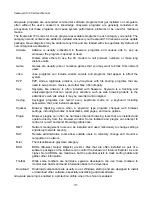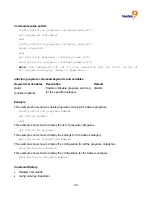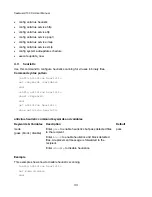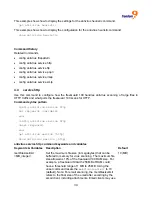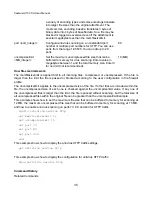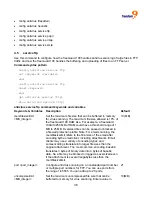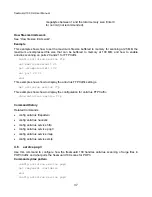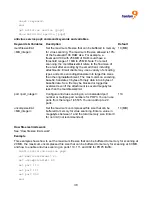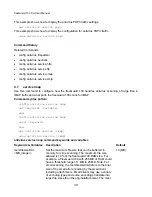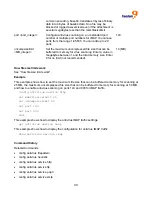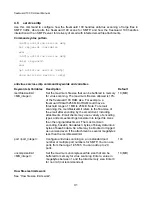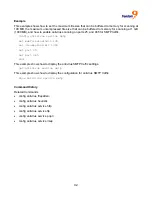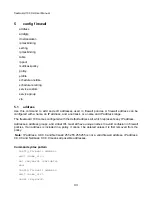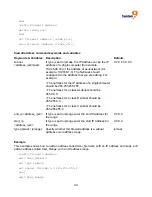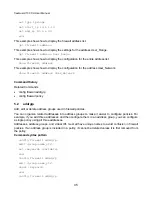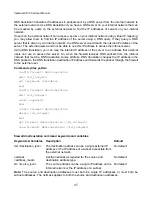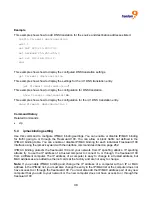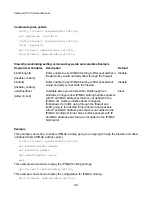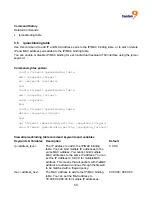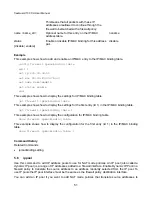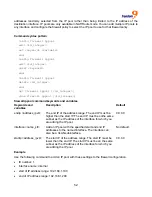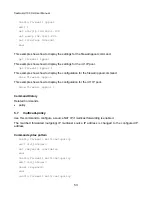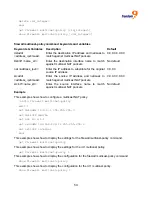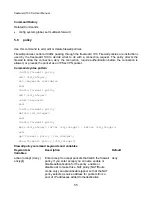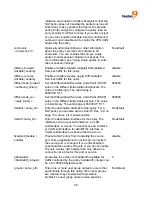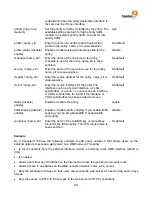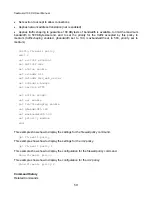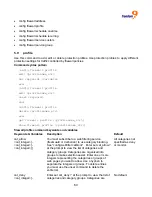
freeGuard 100 CLI User Manual
45
set type iprange
set start_ip 13.1.1.10
set end_ip 13.1.1.30
end
This example shows how to display the firewall address list.
get firewall address
This example shows how to display the settings for the address User_Range.
get firewall address User_Range
This example shows how to display the configuration for the entire address list.
show firewall address
This example shows how to display the configuration for the address User_Network.
show firewall address User_Network
Command History
Related Commands
•
config firewall addrgrp
•
config firewall policy
5.2 addrgrp
Add, edit or delete address groups used in firewall policies.
You can organize related addresses into address groups to make it easier to configure policies. For
example, if you add three addresses and then configure them in an address group, you can configure
a single policy using all three addresses.
Addresses, address groups, and virtual IPs must all have unique names to avoid confusion in firewall
policies. If an address group is included in a policy, it cannot be deleted unless it is first removed from
the policy.
Command syntax pattern
config firewall addrgrp
edit <group-name_str>
set <keyword> <variable>
end
config firewall addrgrp
edit <group-name_str>
unset <keyword>
end
config firewall addrgrp
Summary of Contents for freeGuard 100
Page 1: ...freeGuard 100 UTM Firewall CLI USER S MANUAL P N F0025000 Rev 1 1...
Page 3: ......
Page 7: ......
Page 87: ...80 The config ips anomaly command has 1 subcommand config limit...
Page 183: ...176...

